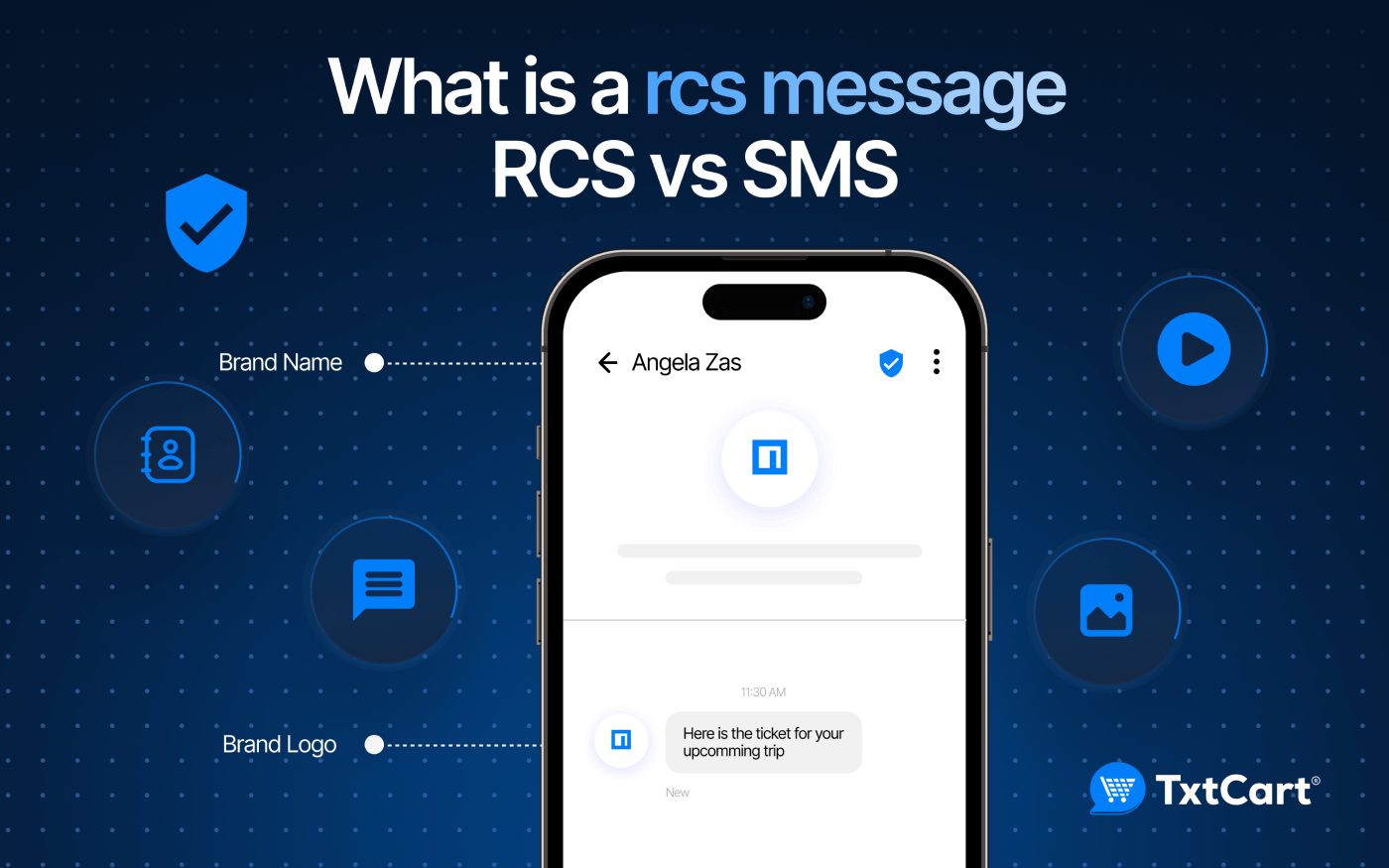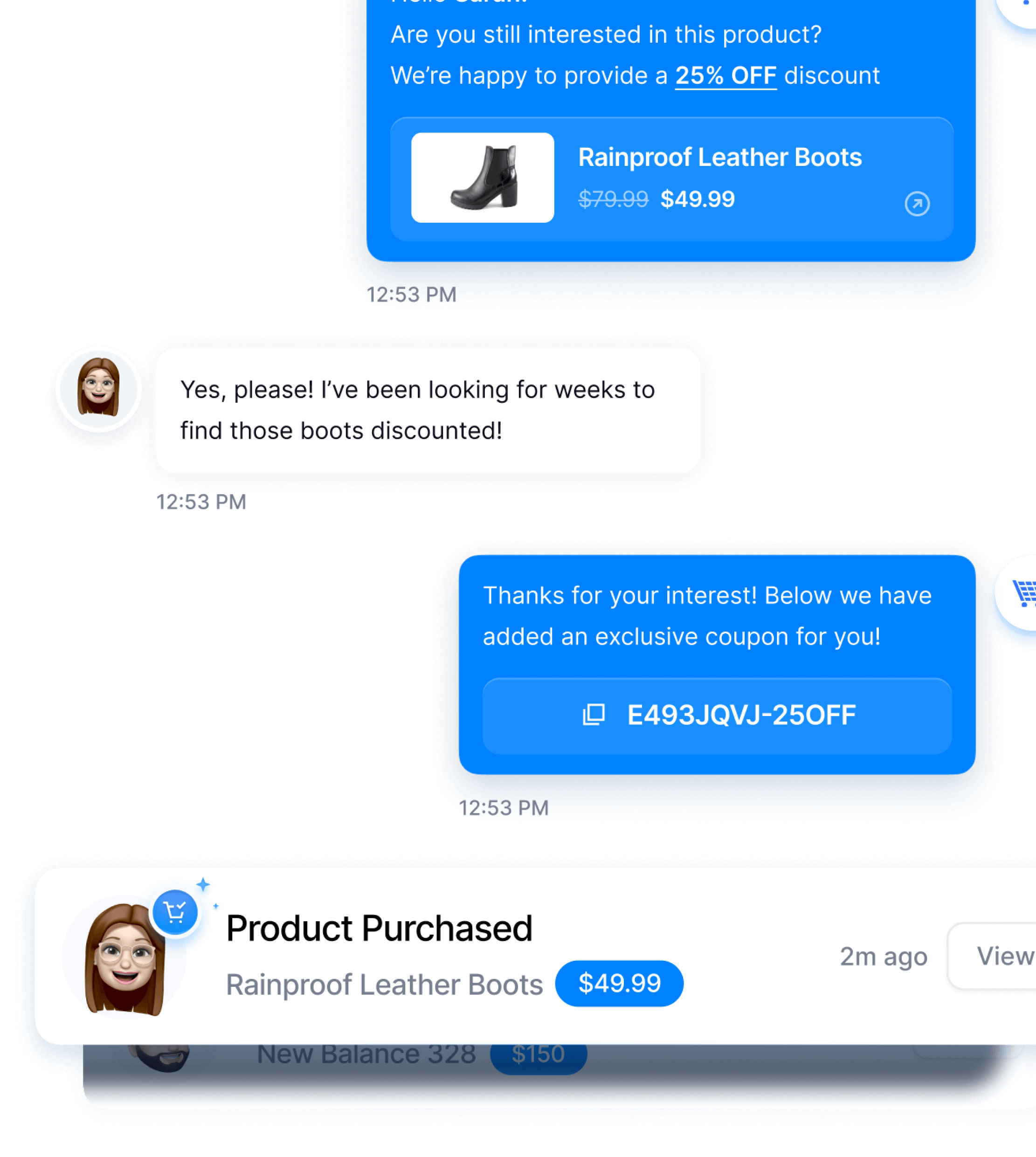In 2025, messaging is the new frontier for business communication. Among the advancements, RCS (Rich Communication Services) messaging stands out. Discover in this blog how RCS messaging differs from traditional SMS and why it’s essential for modern business strategies.
What is RCS messaging?

RCS—Rich Communication Services—is an advanced messaging protocol. While SMS is a service limited to text and basic multimedia, RCS is capable of supporting a richer communications experience.
RCS enables users to send high-resolution pictures, videos, and interactive messages directly from the native messaging application of their phones. You can think of it as Apple’s iMessage or WhatsApp; however, in this case, there is no need for users to download a new application.
Recommended read: SMS vs WhatsApp Marketing: What Should You Use for Shopify Marketing?
Key features of RCS
Some significant features of RCS include:
1. Multimedia support
Unlike SMS, which supports only basic text and low-resolution media, RCS is enriched with advanced multimedia capabilities: users can send and receive high-resolution photos, videos, or audio files within the messages for a much-improved messaging experience.
2. Read receipts and typing indicators
RCS has features such as
- Read receipts to view when the other party has read your message; this instantly shows real-time feedback about the message status.
- Type indicators show if a person is typing an immediate response, further giving conversations a feel of being much more instant and conversational.
These features bring a very engaging and transparent degree to messaging, therefore allowing smoother interactions and making them more intuitive.
3. Rich cards
Rich Cards are interactive messages that may contain images, text, and buttons to make the message more attractive. They become very useful in business for displaying a product, running a promotion, or passing important information in a single message.
For example, a travel agency might return the following Rich Card with an itinerary: an image of the destination; details about the flights; and specifics on checking in.
Recommended read: How to Send Gift Cards via Text | Gift Cards SMS Examples
4. Suggested replies
RCS also offers suggested replies, that is, predefined responses that users can choose at a single tap. The feature uses AI to predict the possible responses based on the context of the conversation, thus saving time and effort in communication.
For example, if someone texts you with regard to availability to meet up, the RCS system would auto-fill responses like “Yes, I’m free” or “Can we reschedule?” This makes the conversation less of a task.
5. Suggested Actions
Suggested actions in RCS can trigger the user to execute some actions right from the messaging app. These actions may include anything from opening a website to making a call, booking a service, or buying something. For example, if somebody is messaging an eatery about dinner reservations; an RCS message may then come with an action button that says “Make a Reservation”, at which point users are
RCS vs SMS: Feature comparison

Here is a table of comparison between RCS and SMS features:
| Feature | RCS | SMS |
| Text and media capabilities | RCS doesn’t have this limitation of 160 characters and supports high-resolution photos, videos, and audio files. | SMS has a limit of 160-character limit and can not include visual content. |
| Group messaging and interactivity | RCS provides rich group chat features like participant management, media sharing, read receipts, and typing indicators. | SMS has simple group messaging, but no participant management or file-sharing features. |
| User experience | RCS provides a modern, fully interactive messaging experience, much like WhatsApp and iMessage, including rich cards, suggested replies, and actions directly inside the messaging app. | SMS offers no such advanced interactive features. |
| Engagement | RCS makes conversations very dynamic with real-time interactions and rich media, increasing conversion rates with actionable messages. | SMS usually has low engagement rates compared to other digital channels. This is due to the fact that it is a channel with limited functionality, plain text format, and non-real-time interactivity. |
Benefits of RCS messaging
Here are some of the key benefits of RCS benefits for businesses:
1. Enhanced customer engagement
RCS allows businesses to run interactive and personalized marketing campaigns with rich media like high-resolution pictures and videos. This helps in increasing the engagement rate since customers find visually rich messages quite attractive compared to traditional SMS.
2. Rich media marketing opportunities
Since RCS supports a variety of multimedia formats and interactive features, it is most appropriate for dynamic marketing and customer service interactions. Businesses can share images of products, promotional videos, and interactive messages to encourage customer interaction, improving overall marketing effectiveness.
3. Improved conversion rates
With interactive RCS messages, suggested replies and actions make it much easier for customers to respond to your marketing efforts and act on them. This smooth process of interaction results in better conversion rates since customers are more likely to act when options are so quick.
Security and Privacy in RCS vs SMS
RCS is more secure than SMS because it supports advanced end-to-end encryption. This means it makes the content of a message very hard to intercept, and its only access is strictly between the sender and the receiver.
SMS does not support end-to-end encryption, and its interception to allow access by hackers has always been a big concern. On the other side, SMS-based authentication methods, such as one-time passwords, are vulnerable to SIM swap attacks and result in the compromising of personal and financial information.
Even when RCS provides improved security features, it is not deployed consistently. End-to-end encryption is only on a few platforms and networks, thus inconsistencies in protection for messages may very well exist. This unequal implementation therefore means that not all RCS messages are uniformly secure across differing users and services.
Challenges and limitations of RCS messages
Here are a couple of challenges with RCS messaging:
1. Internet Dependency
RCS requires an internet connection, either through WiFi or mobile data, for its functioning. This itself might become a big limitation where the internet coverage is bad or unavailable.
Contrary to this, SMS was able to be sent across cellular networks without an internet connection, therefore being more reliable in such situations. Thus, RCS will be less accessible and not that practical in everyday life for messaging purposes for users for whom the internet is not always available.
2. Carrier and Device Compatibility
The adoption of RCS is heavily dependent on both carrier and device support, which can vary significantly across different regions and manufacturers. Not all carriers support RCS, and even among those that do, the implementation and features can differ.
Also, not all devices are compatible with RCS, particularly older models. This inconsistency in support and compatibility can limit the widespread use of RCS, making it challenging for users to experience its full benefits universally.
Future of RCS in Mobile Messaging
RCS is going to further evolve and gain wider acceptance, especially given the backing of large technology companies and actual integration with existing messaging platforms.
When RCS comes to Apple’s ecosystem in 2024, things will take a very different turn and open the floodgates for much wider acceptance and usage. This kind of increase in the target audience would have a chance of enriching the message experience for many more users, firmly entrenching RCS as a hub of mobile communication.
To stay ahead in this evolving landscape, consider using advanced messaging solutions like Txtcart. Install the TxtCart app today and reach out to our team of experts for better results.







